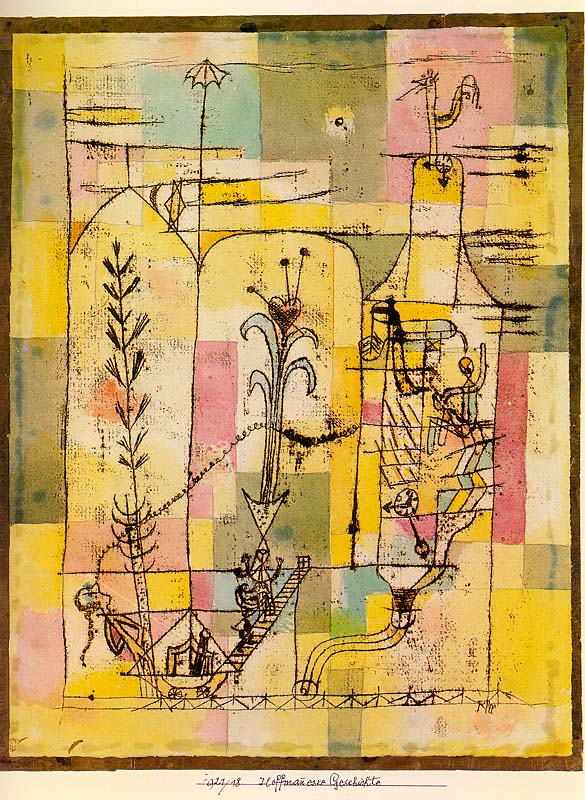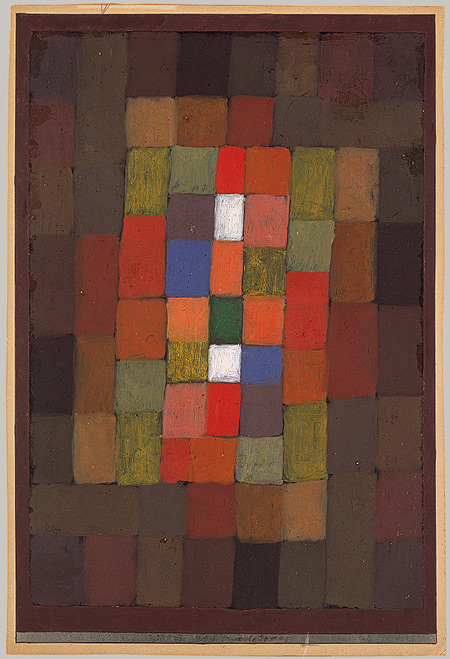Bauhaus - Weimar
At the age of 41, in 1921, Klee was invited to join the newly formed school of architecture and design, Bauhaus in Weimar, Germany. His teaching modules consisted of a theoretical lecture on design theory in the morning and practical courses in the afternoon.
In 1919 Klee developed a personal tracing method, which enabled him to copy pencil, ink and Indian ink drawings and work them into multi-coloured sheets. At Weimar, Klee perfected this aquarelling technique: by systematically superimposing layers of paint. He achieved the finest graduations of colour and tone.
From 1923 the Bauhaus increasingly came under political pressure from right-wing circles, culminating on December 26th with the closure of the Bauhaus in Weimar.
Klee transitioned to the Bauhaus Dessau.
Klee loved the work of German poet E.T.A. Hoffmann.
Tale a la Hoffmann appears to be loosely based upon the poet's
best known lyrical tale "The Gold Pot", a magical story
that switches back and forth between high fantasy and
everyday life in Dresden Germany.
Tale a la Hoffmann - 1921
Dream City - 1921
Klee created many works that related to his teachings at
Bauhaus. This watercolor reflects the artist's preoccupation
with color relationships. In Static-Dynamic Gradation, the outer brown-hue
squares he dubbed "static", and the more vivid center
squares as "dynamic" by virtue of the contrasts they offer.
Static-Dynamic Gradation - 1923
Music was a big part of Klee's life. According to his son, 500 of his works refer to theater, masks, or music. His favorite composers were Bach, Mozart, and Beethoven.
Abstract Trio - 1923
